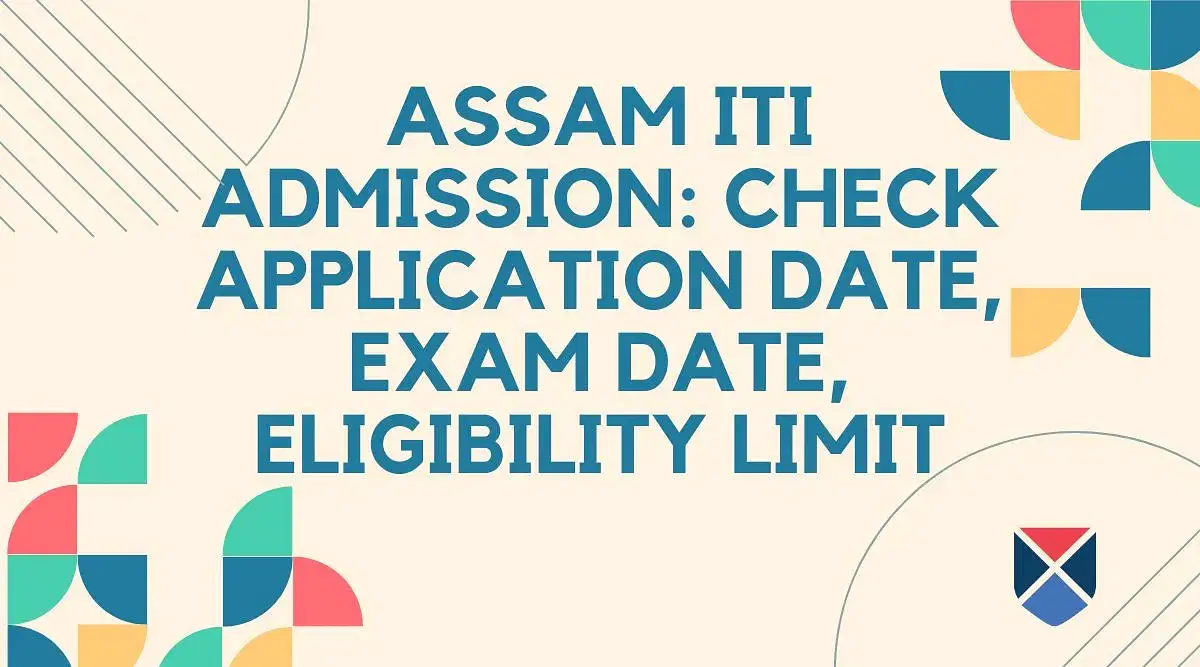ITI Electrician mock test questions are modelled on the previous year question papers. These question papers must be practised by the candidates while preparing for the ITI trade course exams.
Table of Contents
ITI Electrician mock test questions are important and are designed by keeping parity with the questions from previous years. The ITI Electrician trade is a two year course. At the completion of the course the candidates are awarded the NCVT/SCVT certificate.
ITI trades are vocational courses that have a duration between 6 months and 2 years, depending on the trade. The ITI mock tests must be practised by all the candidates enrolled in the trade to be able to perform better in the exams. ITI offers courses in various trades such as electrician, fitter, computer operator, carpenter, plumber, draughtsman, and many more.
ITI Electrician Mock Test Questions
Practising MCQs is mandatory to score good marks in the ITI year-end exams. The MCQs are a great way to test the knowledge gained on the trade. It is crucial to follow the syllabus thoroughly in order to be able to answer the questions.
MCQs are multiple choice questions. The candidates will have to choose the correct answer from a list of options given. The MCQ questionnaire for ITI Electrician trade has been shared below:
ITI Electrician Mock Test MCQs for Electrician Theory 1st Year
1. What is meant by smothering in fire extinguishing?
(A) Removing fuel element from the fire
(B) Adding the fuel element to the fire
(C) Isolating the fire from the supply of oxygen
(D) Using of water to lower the temperature
Ans: C
2. What is a physical hazard?
(A) Vibration
(B) Smoking
(C) Radioactive
(D) Corrosive
Ans: A
3. Choose the correct operation sequence to be performed while using a fire extinguisher?
(A) Pull, Aim, Sweep, Squeeze
(B) Pull, Aim, Squeeze, Sweep
(C) Push, Arrange, Squeeze, Sweep
(D) Push, Arrange, Sweep, sequence
Ans: B
4. Which plier is used in the making of wire hooks and loops?
(A) Long nose plier
(B) Flat nose plier
(C) Diagonal cutting plier
(D) Round nose plier
Ans: D
5. Why is a Pincer used?
(A) For cutting small diameter of wires
(B) For twisting flexible wires
(C) For holding small objects in places where finger cannot reach
(D) For the extraction of pin nails from the wood
Ans: D
6. Why is mortise chisel used?
(A) For general chiselling work on a piece of wood
(B) For the making of rectangular holes in a piece of wood
(C) For light chiselling and cleaning of sharp corners
(D) For the paring and finishing of joints in a wood
Ans: B
7. Which kind of stake is used in the making of sharp bends in sheet metal?
(A) Hatchet stake
(B) Square stake
(C) Bevel edge square stake
(D) Blow horn stake
Ans: A
8. Which kind of cold chisel is used in squaring the materials at the corners?
(A) Cross cut chisel
(B) Web chisel
(C) Diamond point chisel
(D) Half round chisel
Ans: C
9. Which kind of calliper is used in the drawing of parallel lines along the outer edge of the materials?
(A) Jenny calliper
(B) Inside calliper
(C) Spring joint calliper
(D) Outside calliper
Ans: A
10. What is the use of a firmer chisel?
(A) In the trimming and finishing of joints
(B) In general chiselling work
(C) In the making of rectangular holes in wood
(D) In light chiselling cleaning sharp corner
Ans: B
11. Which kind of soldering flux is used in the soldering galvanised iron?
(A) Rosin
(B) Zinc chloride
(C) Sal ammonia
(D) Hydrochloric acid
Ans: D
12. Which kind of soldering is used in quantity production and in tinning work?
(A) Soldering with a flame
(B) Dip soldering
(C) Soldering with soldering gun
(D) Soldering with soldering iron
Ans: B
13. What is the full form of XLPE Cable?
(A) X ess Line Phase Earthing
(B) Cross Line Poly Ethylene
(C) Excess Length Paper and Ebonite
(D) Cross Linked Poly Ethylene
Ans: D
14. What is the use of 'serving' layers in an underground cable?
(A) Protect the cable from mechanical injury
(B) Protect the cable from moisture
(C) Protect armouring from atmospheric condition
(D) Protect metallic sheath against corrosion
Ans: C
15. How many electrons are present in the valence shell of copper atom?
(A) 18
(B) 8
(C) 2
(D) 1
Ans: D
16. How many electrons are present in the 3rd cell of copper atom?
(A) 29
(B) 18
(C) 13
(D) 8
Ans: B
17. Which is a semiconducting material among the following?
(A) Germanium
(B) Manganin
(C) Ebonite
(D) Eureka
Ans: A
18. What is the indication shown on a neon polarity indicator in the checking of A.C. supply?
(A) Only one electrode will glow
(B) Both electrodes will glow
(C) One electrode will glow and another will flicker
(D) Both electrodes will flicker
Ans: B
19. Which law mentions that in a closed electrical circuit, the applied voltage is equal to the sum of the voltage drops?
(A) Laws of Resistance
(B) Ohm’s Law
(C) Kirchhoff’s Second Law
(D) Kirchhoff’s First Law
Ans: C
20. What is the change in the resistance value of a conductor when the diameter is doubled?
(A) Decreases to four times
(B) Increases to two times
(C) No change in value of resistance
(D) Decrease to half of the value
Ans: A
Also Check: Top 10 ITI Colleges in India 2023: Fee, Admission
ITI Electrician Mock Test MCQs for Electrician Theory 2nd Year
21. Which rule is applied in the finding of the direction of induced emf in a DC generator?
(A) Right hand palm rule
(B) Cork screw rule
(C) Fleming's right hand rule
(D) Fleming's left-hand rule
Ans: C
22. What is the formula used for calculating the back emf of a D.C motor?
(A) Eb = V x Ia Ra Volts
(B) Eb = V / Ia Ra Volts
(C) Eb = V + Ia Ra Volts
(D) Eb = V – Ia Ra Volts
Ans: D
23. Which energy is transformed into electrical energy by a generator?
(A) Heat
(B) Mechanical
(C) Chemical
(D) Kinetic
Ans: B
24. What is the working principle of a D.C generator?
(A) Fleming's left-hand rule
(B) Cork screw rule
(C) Faraday's laws of electromagnetic induction
(D) Fleming's right-hand rule
Ans: C
25. What is the formula for a dynamically induced EMF?
(A) BL sinθ volts
(B) BLV volts
(C) BLV cosθ volts
(D) BLV sinθ volts
Ans: A
26. Which method is used to find the direction of the magnetic field?
(A) Right hand palm rule
(B) Cork screw rule
(C) Fleming's right hand rule
(D) Fleming’s left hand rule
Ans: C
27. How many parallel paths are there in the duplex lap winding of a four-pole DC Generator?
(A) 12
(B) 8
(C) 6
(D) 4
Ans: B
28. How are interpoles connected in a DC generator?
(A) In parallel with armature
(B) In series with armature
(C) In parallel with shunt field
(D) In series with shunt field
Ans: B
29. What is the need of residual magnetism in a self-excited DC generator?
(A) For reducing the armature current
(B) For maintaining constant output voltage
(C) For building up the voltage
(D) For reducing the field current
Ans: C
30. What is the name of the compound generator when the shunt field is connected with the armature in parallel?
(A) Differential compound
(B) Short shunt compound
(C) Long shunt compound
(D) Cumulative compound
Ans: B
31. Which instrument is used for measuring the armature winding resistance?
(A) Multimeter
(B) Megger
(C) Kelvin bridge
(D) Series type Ohmmeter
Ans: C
32. Which instrument is used in testing the armature winding of short and open circuits?
(A) Internal Growler
(B) Tong Tester
(C) Digital multimeter
(D) External Growler
Ans: D
33. What is the speed control method of a DC motor called?
(A) Armature diverter method
(B) Voltage control method
(C) Field tapping method
(D) Field diverter method
Ans: A
34. Which kind of winding wire is used in a DC field coil?
(A) Single silk covered copper wire
(B) Super enamelled copper wire
(C) PVC covered copper winding wire
(D) Double silk covered copper wire
Ans: B
35. How many parallel paths are there in the duplex lap winding of the armature of a 4-pole D.C Motor?
(A) 8
(B) 6
(C) 4
(D) 2
Ans: D
36. Which formula calculates the total electrical degree in the stator of an A.C motor?
(A) Total electrical degree = 180° x No. of slots
(B) Total electrical degree = 180°/No. of slots
(C) Total electrical degree = 180° x No. of poles
(D) Total electrical degree = 180°/No. of poles
Ans: C
37. What is the fuse rate required for running a 10 HP 3-phase induction motor at full load?
(A) 30A
(B) 25A
(C) 15A
(D) 10A
Ans: B
38. What is the synchronous speed of an A.C. three-phase induction motor that has six poles at a frequency of 50 Hz?
(A) 1000 rpm
(B) 800 rpm
(C) 1440 rpm
(D) 1200 rpm
Ans: A
39. Calculate the percentage slip in a three-phase induction motor that has six poles with 50 Hz rotating with an actual speed of 960 rpm?
(A) 5%
(B) 4%
(C) 3%
(D) 2%
Ans: B
40. Which of the below-mentioned test is performed using an internal growler in an AC motor winding?
(A) Short circuit test
(B) Continuity test
(C) Polarity test
(D) Ground test
Ans: A
Also Check: ITI Syllabus 2023: PDF Download [English, Hindi]
ITI Electrician Exam Pattern
The exam pattern for ITI Electrician trade has been revised by the conducting authorities. The exam pattern has been shared below:
|
Subject |
Number of Questions |
Marks Allotted |
|
Electrician Trade Theory |
38 |
76 |
|
Workshop Science and Calculation |
6 |
12 |
|
Engineering drawing |
6 |
12 |
|
Employability Skills |
25 |
50 |
|
Total |
75 |
150 |
Also Check: List of ITI Courses After 12th 2024: Science, Arts, Commerce Stream























POST YOUR COMMENT